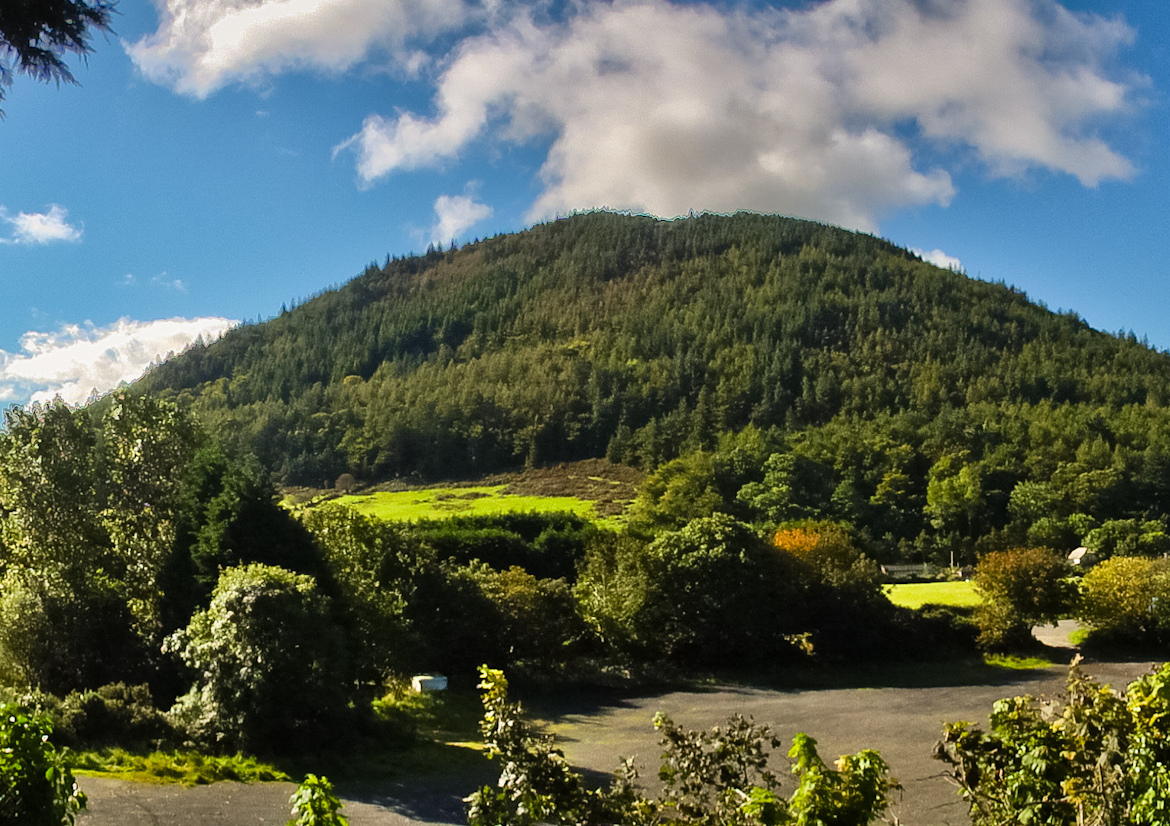About
Site Directory
Copyright © 2025 www.isleofman.com
All Right Reserved
powered by 
Copyright © 2025 www.isleofman.com
All Right Reserved
powered by 


Slieau Whallian in St Johns in the Isle of Man is a popular hill for walkers, mountain bikers and fell runners
St Johns. Travelling on the A1 from Douglas to Peel, turn left opposite Tynwald Hill, then first right onto the Patrick Road (A30). Immediately after the junction, there is a left turning, known locally as the Gleneedles Road. Access to the main entrance of the plantation is a short distance along this ascending road.
Slieau Whallian rises steeply to a height of 900 feet. During the ascent, there are views of St Johns Village, with Tynwald Hill, Parliament Field and St Johns Church easily identifiable, but from the summit, these are hidden.
A second summit, known as 'Cairn Slieau Whallian' rises a further 200 feet.
From the summit, the River Neb and the former Peel-Douglas railway line, which is now part of the Heritage Trail footpath, are seen winding through the valley below.
To the west, Peel Hill and St Patrick's Isle can be seen.
Immediately to the east are the uplands above Foxdale village, with their disused mine workings and buildings, and looking south, the peaks of South Barrule and Cronk-ny-Arrey-Lhaa can be seen.
Looking north, there are clear views of the sandy coastline and low-lying villages of Kirk Michael, Ballaugh, Sulby and beyond.
Finally, to the northeast gives views of the Island's central hill range, with the Beary Mountain closest by and Snaefell visible in the distance.
Slieau Whallian has a grisly reputation due to the reputed punishment of witches in past centuries. An unfortunate woman accused of witchcraft would be "put into a barrel, with sharp iron spikes inserted round the interior, pointing inwards, and thus, by the weight of herself and the apparatus, allowed to roll from the top of the hill to the bottom; and many other persons of both sexes suffered here in a similar manner."
Jenkinsons's Practical Guide to the Isle of Man (1874), the source of this information, also relates the following account:
"It is said that a man who was accused of murder, and condemned to suffer death on this hill, pleaded his innocence of the crime laid to his charge, and told his accusers that if he was not guilty, a thorn-tree would grow at his head where he was buried, and that a well or spring of water would lie found at his feet, which well and thorn-tree are said to be seen to this day. And, moreover, he warned his persecutors, that as sure as he suffered wrongfully, he would continue to frequent and trouble the locality so long as grass continued to grow, or water to flow; and being faithful to his word, he continued to annoy and terrify the neighbourhood in succeeding ages."
Despite these unfortunate connotations, Slieau Whallian is popular with walkers, mountain bikers and fell runners. It is on the course of several annual sporting events, including the End to End Challenge and a popular fell run on New Year's Day.